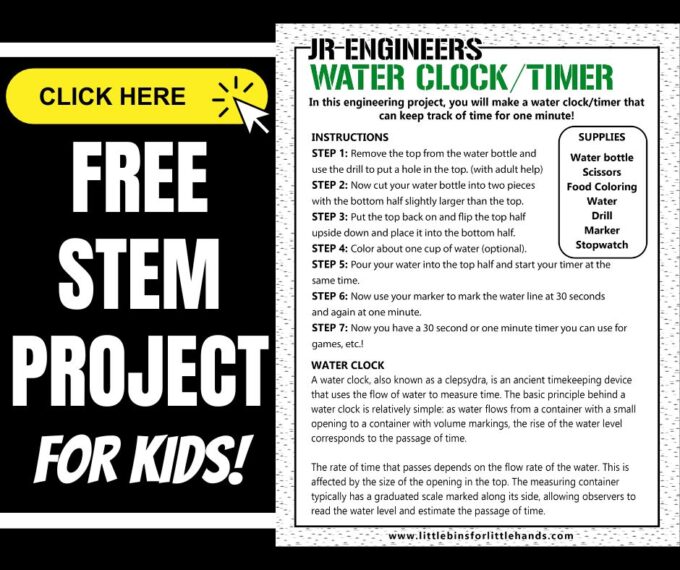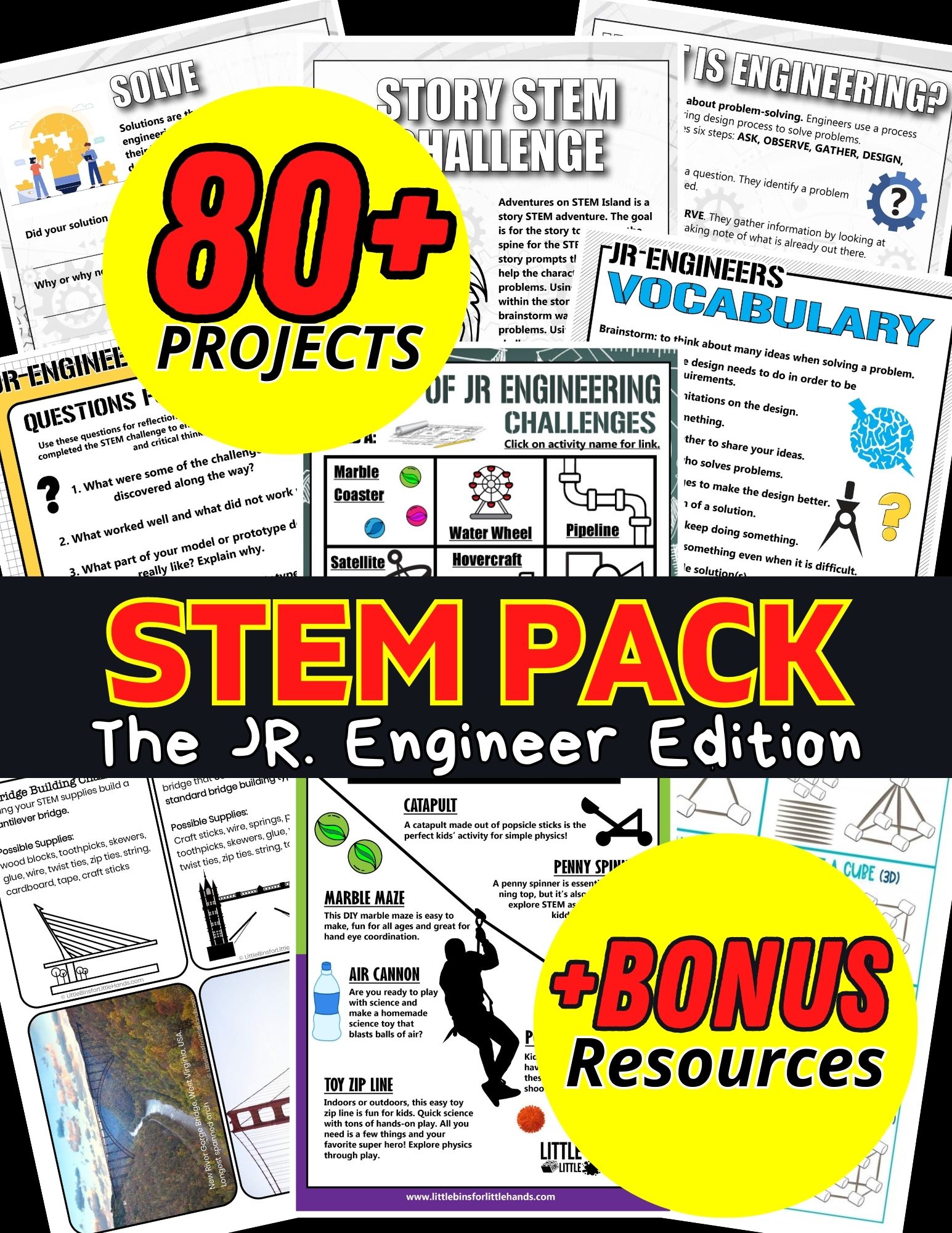How did the Ancient Egyptians and Ancient Greek keep track of time? Here’s how you can make your own water clock at home or in the classroom. It makes for a fun and simple engineering activity for kids of all ages. All you need are a few simple supplies to get started. We love hands-on STEM projects for kids!
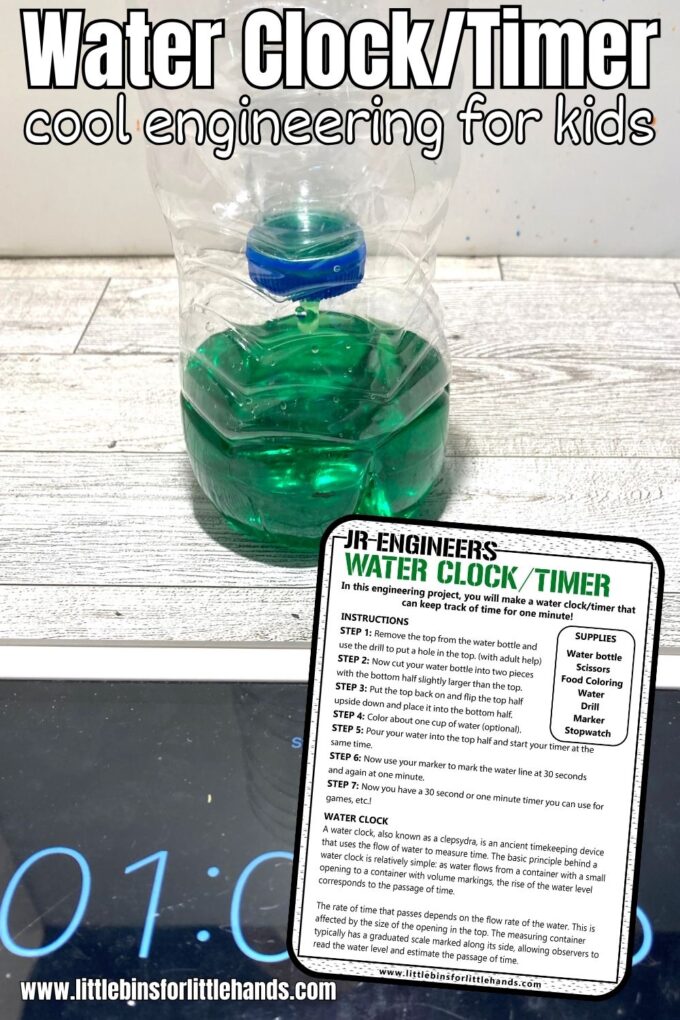
How Does A Water Clock Work
A water clock, also known as a clepsydra, is an ancient timekeeping device that uses the flow of water to measure time. It is not known who first invented the water clock because the Ancient Egyptians, Ancient Greeks and even the Chinese are recorded as having their own versions.
The invention of the water clock would have been very important for these ancient civilizations to measure time, and they were among the earliest timekeeping devices. It allowed people to keep track of the passing of time during the day and night, making them useful for scheduling activities, such as work, worship, and other daily routines.
The basic principle behind a water clock is relatively simple: as water flows from a container with a small opening to a container with volume markings, the rise of the water level corresponds to the passage of time.
The rate of time that passes depends on the flow rate of the water. This is affected by the size of the opening in the top. The measuring container typically has a graduated scale marked along its side, allowing observers to read the water level and estimate the passage of time.
Why don’t we use water clocks today? While they are quite accurate for short periods, but they tended to become less accurate over longer periods of time. Factors such as temperature, humidity, and the water’s flow rate could affect their reliability. (Design an experiment to test it out!)
Read on to find out how to make your own water clock!
How To Make A Water Clock
Suggestion: Also make a sundial to measure time!
Supplies:
- Water bottle
- Scissors
- Food Coloring
- Water
- Drill
- Marker
- Stopwatch
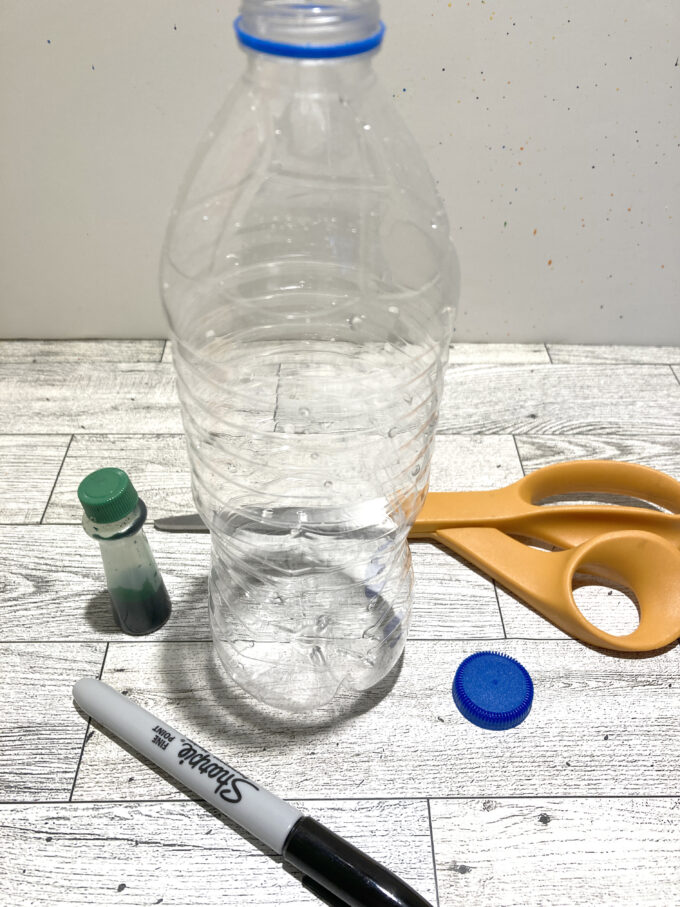
Instructions:
STEP 1: Remove the top from the water bottle and use the drill to put a hole in the top. Adult help required for this step!
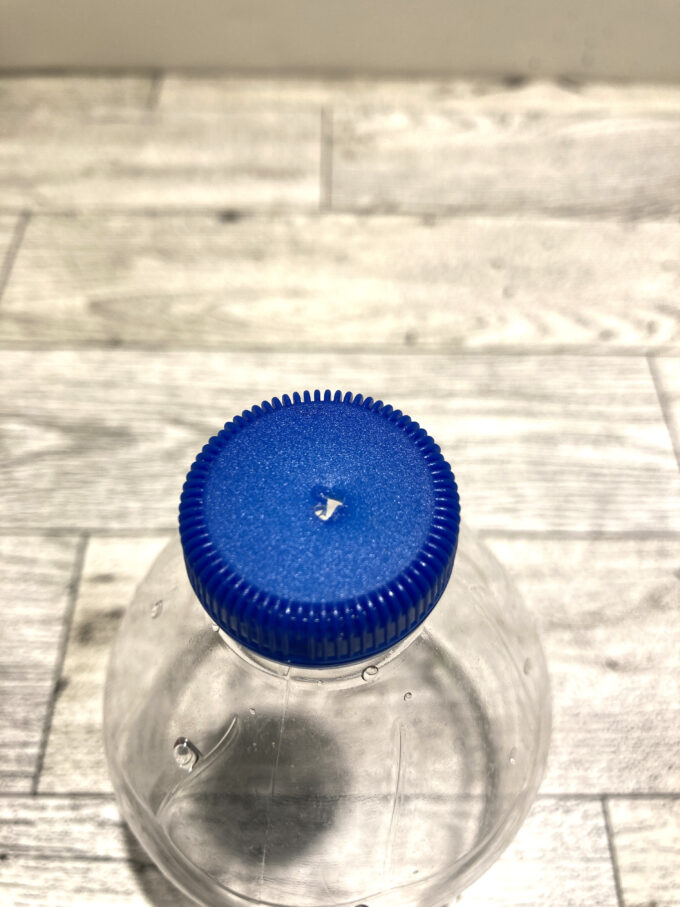
STEP 2: Now cut your water bottle into two pieces with the bottom half slightly larger than the top.
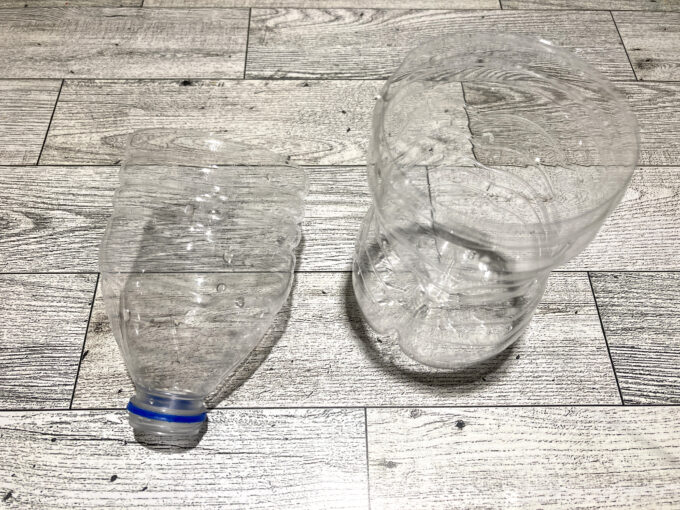
STEP 3: Put the top back on and flip the top half upside down and place it into the bottom half.
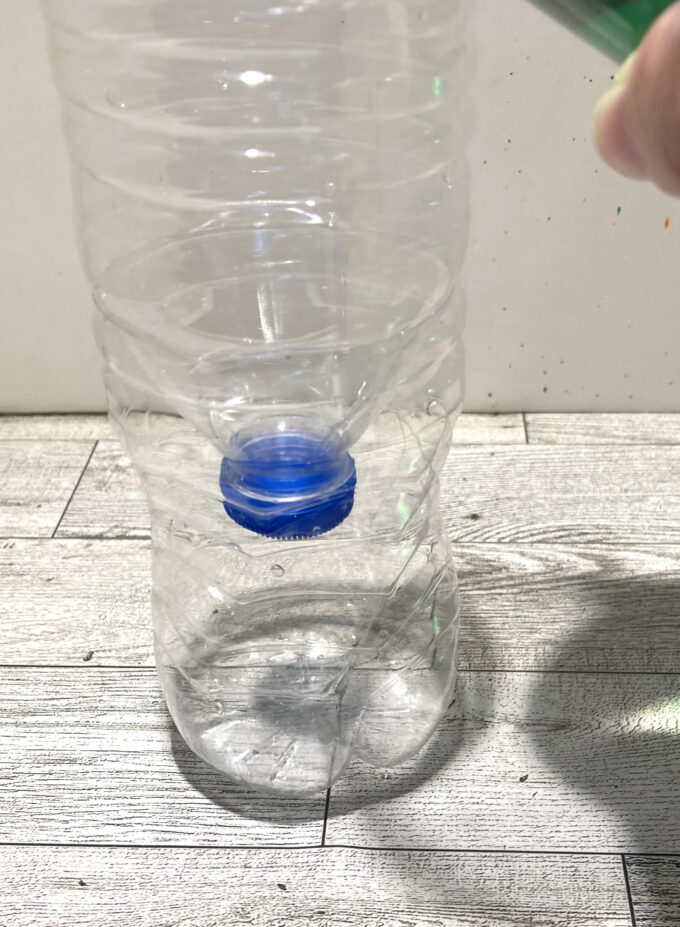
STEP 4: Add food coloring to about one cup of water (optional).
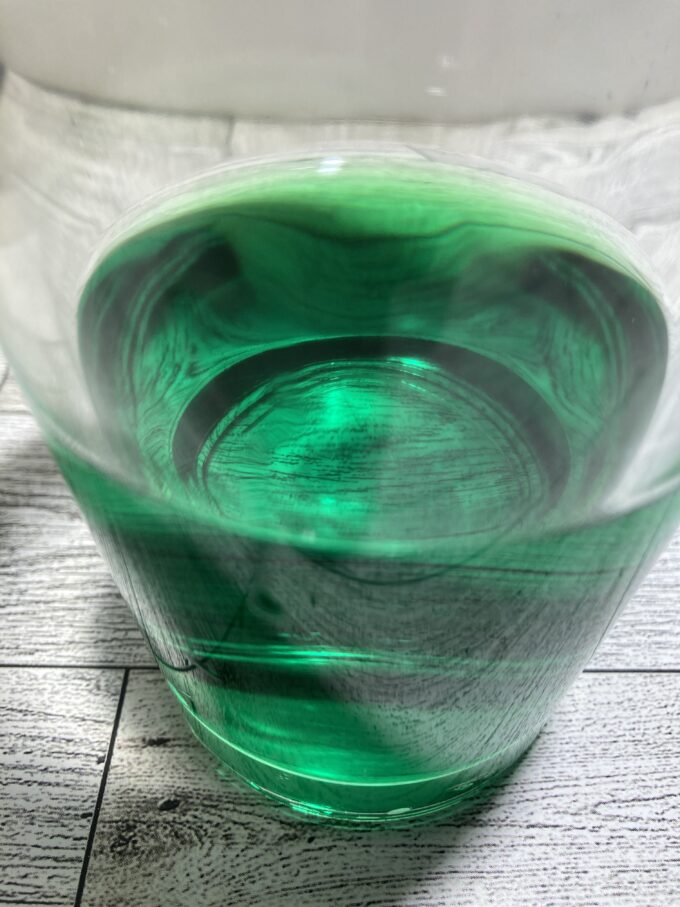
STEP 5: Pour your water into the top half and start your timer at the same time.
Note: In Ancient civilization the passage of time would be an estimate. Here you can use an electronic clock to measure the intervals of time.
STEP 6: Now use your marker to mark the water line at 30 seconds and again at one minute.
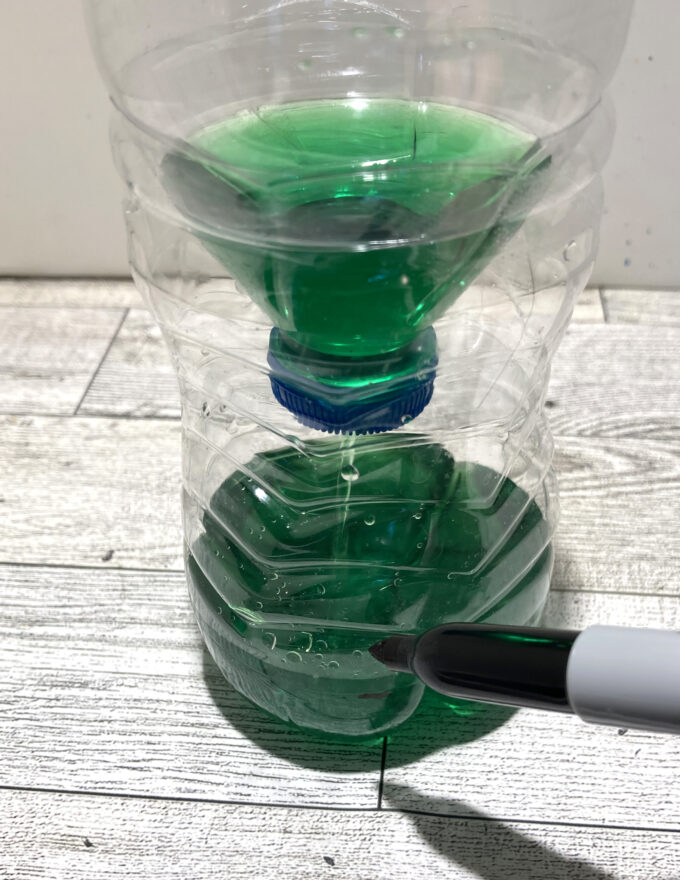
STEP 7: Now you have a 30 second or one minute timer you can use for games, etc.!
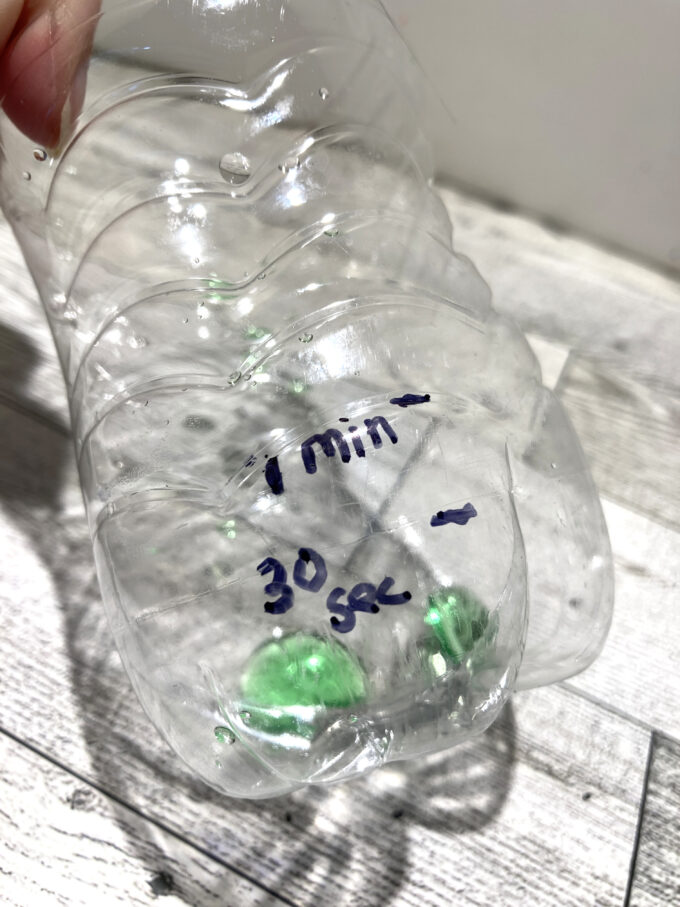
Helpful STEM Resources To Get You Started
Here are a few resources that will help you introduce STEM more effectively to your kiddos or students and feel confident yourself when presenting materials. You’ll find helpful free printables throughout.
More Fun Things To Build
When you finish making your water clock, why not explore more science and STEM with one of these ideas below. You can find all our engineering activities for kids here!
- Make your own air cannon and blast down dominoes and other similar items.
- Make your own homemade magnifying glass for simple physics.
- Construct a working Archimedes screw simple machine.
- Make a paper helicopter and explore motion in action.
- Build your own mini hovercraft that actually hovers.
- Build a balloon powered car and see how far it can go.
- A good breeze and a few materials are all you need to tackle this DIY kite project.
- It’s a fun chemical reaction that makes this bottle rocket take off.
Printable STEM Activities Pack for Kids
80+ Doable Engineering Projects in one convenient pack!
- Full instructions with sample images
- Activity-specific instruction sheets
- Data Collection Sheets
- Questions for Reflection
- Architecture Building Cards: Try the tallest tower challenge
- Bridge Building Cards: Explore different types of bridges to build your own.
- Paper Chain STEM Challenge: Who can make the longest chain? Great icebreaker or quick challenge!
- 3 Little Pigs Architectural Pack: Design a house that won’t blow away!
- Great marshmallow challenge: A classic challenge kids love!
- Real-world STEM challenge lesson but don’t know where to start? Our easy-to-follow template shows the steps!
- What’s the difference between a scientist and an engineer?
- Crossword and word search with engineering vocabulary.
- Engineering vocabulary cards
- Design a one-of-a-kind invention and write about it with this 5-page activity!


